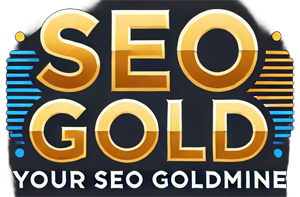Title Tags Optimization: Key Strategies to Elevate Your SEO Rankings in Vancouver
Unlocking the Power of Title Tags: Proven Tips to Enhance Your SEO
Title tags are one of the most critical elements of on-page SEO. They play a pivotal role in how search engines and users perceive your website. As the first thing Google looks at when crawling your site, a well-crafted title tag can significantly influence your rankings and click-through rates (CTR). Despite their importance, title tags are often overlooked or misunderstood. In this article, we’ll dive deep into the world of title tags, offering practical tips and insights to help you optimize them effectively.
What Are Title Tags?
A title tag is an HTML element that specifies the title of a web page. It appears in the search engine results pages (SERPs) as the clickable headline for a given result and is also displayed at the top of a browser window when a page is open. Think of it as the first impression your website makes on both search engines and potential visitors. A well-crafted title tag not only improves your search rankings but also entices users to click through to your site.
Why Are Title Tags So Important?
Title tags are crucial for several reasons:
- Search Engine Ranking: Google and other search engines use title tags as a primary factor in determining what a page is about. A well-optimized title tag helps search engines understand the content of your page, improving its chances of ranking higher for relevant queries.
- Click-Through Rate (CTR): An engaging and relevant title tag can significantly increase your CTR from search results. Even if your page ranks well, a poorly crafted title might not attract clicks, reducing the effectiveness of your SEO efforts.
- User Experience: Title tags contribute to a user’s first impression of your site. Clear, concise, and relevant titles help users quickly understand what your page offers, enhancing their overall experience.
Title Tag Best Practices
Optimizing your title tags is both an art and a science. Here are some best practices to ensure your title tags are working hard for your SEO:
- Incorporate Primary Keywords Early
- Tip: Include your primary keyword near the beginning of the title tag. Search engines give more weight to the first few words, so placing your keyword early can help improve rankings for that term.
- Example: If you’re optimizing a page for “Vancouver SEO Services,” a good title might be “Vancouver SEO Services | Expert SEO Agency in Vancouver.”
- Keep It Under 60 Characters
- Tip: Google typically displays the first 50-60 characters of a title tag. To ensure your full title is visible in the SERPs, keep it within this range. Longer titles may get truncated, which can impact their effectiveness.
- Example: “Effective SEO Strategies for Small Businesses” is concise and likely to display fully in the search results.
- Avoid Keyword Stuffing
- Tip: While it’s important to include keywords, avoid cramming too many into your title tag. Keyword stuffing can make your title appear spammy, which could deter users from clicking and may even harm your rankings.
- Example: Instead of “SEO Services, SEO Consulting, SEO Experts,” opt for “SEO Services & Consulting | Expert SEO Solutions.”
- Use Branding Wisely
- Tip: Including your brand name in the title tag can help build brand recognition and trust, especially if your brand is well-known. However, if space is tight, it’s often better to prioritize keywords and place the brand at the end.
- Example: “SEO Tips & Strategies | SEOGold.ca” balances keyword relevance with brand visibility.
- Create Unique Titles for Each Page
- Tip: Each page on your website should have a unique title tag that accurately reflects the content of that page. Duplicate title tags can confuse search engines and dilute the relevance of your pages.
- Example: Instead of using the same title for multiple service pages, customize each one: “Local SEO Services in Vancouver | SEOGold.ca” and “E-Commerce SEO Experts | SEOGold.ca.”
- Include a Call to Action (CTA)
- Tip: Where appropriate, incorporating a call to action in your title tag can encourage users to take the next step. Phrases like “Learn More,” “Get Started,” or “Contact Us” can increase your CTR.
- Example: “Boost Your Rankings with Our SEO Services | Get a Free Consultation Today!”
- Leverage Emotional Triggers
- Tip: Titles that evoke curiosity, urgency, or excitement can make your listing more compelling in the SERPs. Use emotional triggers to connect with your audience and entice them to click.
- Example: “Unlock the Secrets to SEO Success | Start Your Journey Today!”
- Test and Refine Your Titles
- Tip: SEO is not a one-time task. Regularly review your title tags and test different variations to see what works best. Use tools like Google Search Console to monitor your CTR and make adjustments as needed.
- Example: A/B testing different title tags can reveal which version resonates most with your audience.
- Consider the User’s Intent
- Tip: Your title tag should align with the user’s search intent. Whether the user is looking for information, a product, or a service, your title should clearly indicate that your page meets their needs.
- Example: For a page targeting users looking for tips, a title like “SEO Tips for Beginners | Improve Your Rankings Today” addresses their intent directly.
- Align with Content on the Page
- Tip: Ensure that your title tag accurately reflects the content of your page. Misleading titles may get clicks, but they can also lead to high bounce rates if users don’t find what they expected, which can negatively affect your SEO.
- Example: If your page is about “Local SEO Services,” the title should clearly indicate this, rather than something unrelated like “Best SEO Tools for 2024.”
Common Mistakes to Avoid
Even seasoned SEO professionals can make mistakes with title tags. Here are some common pitfalls to watch out for:
- Overly Vague Titles: Titles like “Home” or “Products” are too generic and provide no context for search engines or users. Always aim for specificity.
- Using All Caps: Titles in all caps can appear shouty and may be harder to read. Use title case for a more professional and approachable appearance.
- Neglecting Mobile Users: Mobile devices display fewer characters in title tags than desktops. Keep mobile users in mind by ensuring the most important information is visible early in the title.
- Ignoring Title Tag Updates: SEO trends and best practices evolve. Regularly update your title tags to ensure they remain relevant and effective.
Tools for Title Tag Optimization
Optimizing title tags can be easier with the right tools. Here are a few that can help:
- Yoast SEO (WordPress Plugin): Provides real-time analysis and suggestions for improving your title tags.
- SEMrush: Offers tools for auditing your site’s title tags and comparing them with competitors.
- Ahrefs: Helps you analyze title tags across your site and provides keyword suggestions for optimization.
Elevate Your Rankings with Optimized Title Tags
Title tags are a small but mighty component of your SEO strategy. By following these tips, you can craft title tags that not only improve your search engine rankings but also boost your click-through rates and enhance the overall user experience. Remember, SEO is an ongoing process, so continuously monitor and refine your title tags to stay ahead of the competition.
Investing time and effort into optimizing your title tags can yield significant returns in the form of increased visibility, traffic, and conversions. As one of the first elements that Google looks at, and the first thing users see in the search results, your title tags are truly the gateway to your website’s success.













